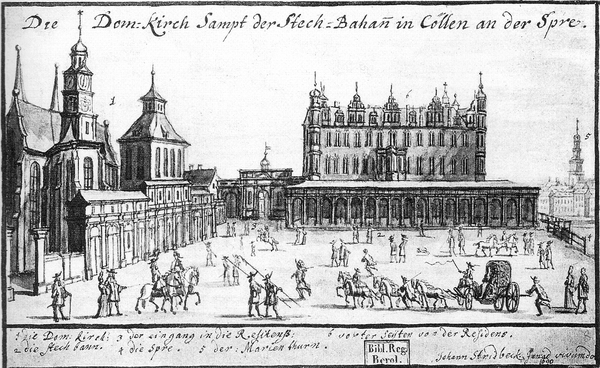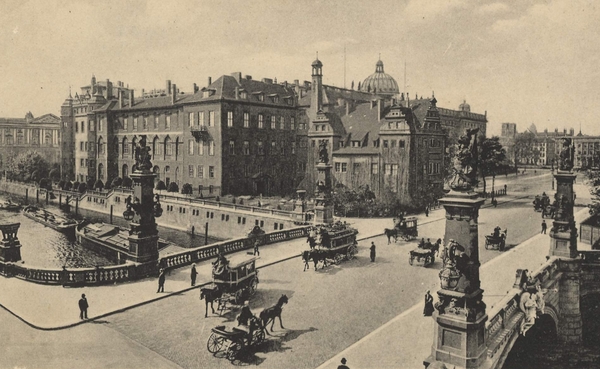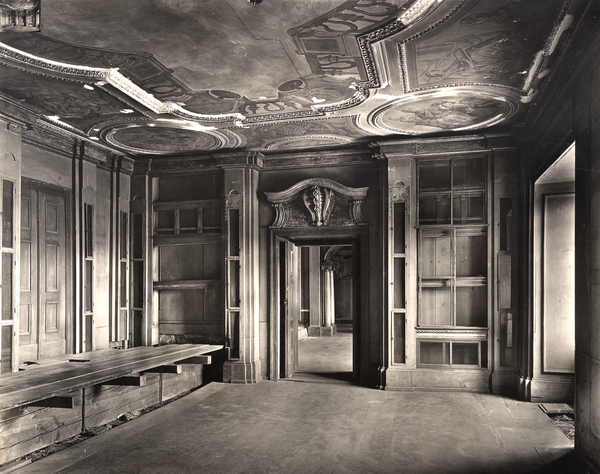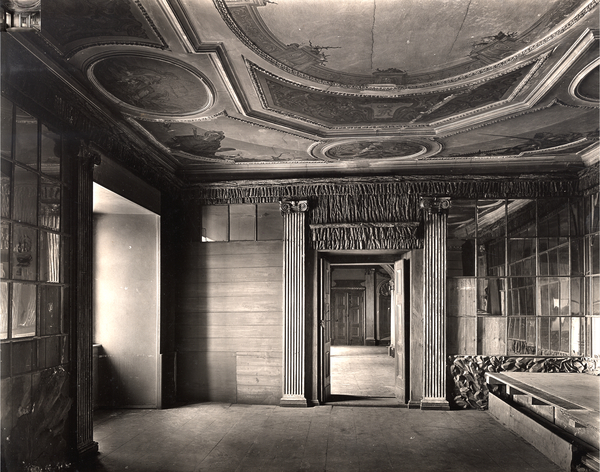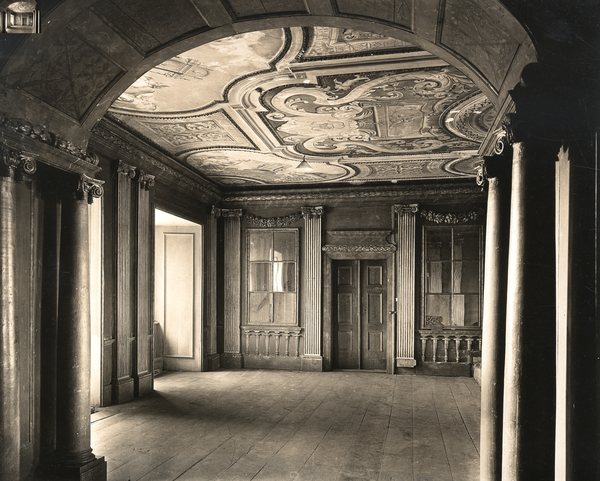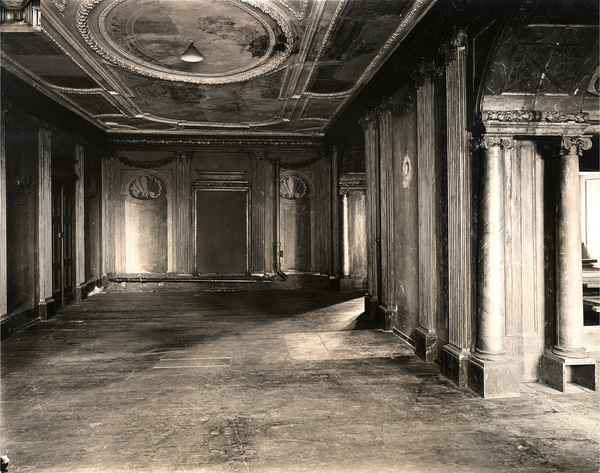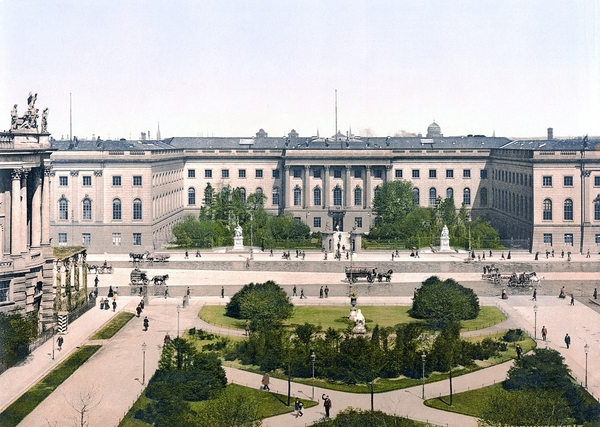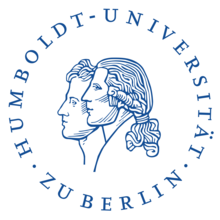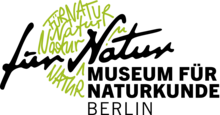The Kunstkammer in the Vault
Around 1600, the Kunstkammer was housed in a fireproof stone vault on the palace grounds. Its exact site is unknown, but it probably lay in the direction of the former cathedral, since the sources describe it as located near the entrance gate to the palace grounds. The cathedral treasury, which stood directly adjacent to this gate, was likewise housed in a vault. The Kunstkammer complex consisted of two rooms: one for the collection of artifacts, the other for textiles and accessories for use at court. (DS)
- Sources [Quellen]: Inventar 1603, Inventar 1605
- Objects [Objekte]: no objects catalogued at this time
The Kunstkammer in the Apothecary Wing
By the mid-1680s at the latest, the Kunstkammer occupied the apothecary wing of the palace, located directly adjacent to the pleasure garden. This annex along the Spree River housed the court apothecary and book printing shop on the lowest floor and the library above. The exact date of the Kunstkammer’s move to this location is not documented. It then occupied several rooms on the second upper floor of the connecting transverse wing between the palace and the apothecary, in the immediate vicinity of the electoral living quarters. In the seventeenth century, visitors to the palace followed a kind of walking tour that led through the reception rooms, banquet halls, and chambers of the electoral family, up a staircase and into the rooms of the Kunstkammer and library prior to a stroll through the pleasure garden. (DS)
- Sources [Quellen]: Inventar 1685/1688, Inventar 1688a, Inventar 1688b, Eingangsbuch 1688/1692a, Eingangsbuch 1688/1692b, Materialbuch Ungelter, Inventar 1694, Bichi 1891, Beger 1696/1701
- Objects [Objekte]
The Kunstkammer in the Schlüter Building
From 1698 to 1713, Friedrich III/I had the Berlin Palace elaborately renovated. While the Kunstkammern of other residential palaces were often housed in modest, secondary spaces, after 1703 the Berlin collections moved to the mezzanine level of the third upper floor, directly above the new parade apartments. Consisting of three rooms, each in the northeast corner of the palace, the Kunstkammer (Rooms 990–991/992) and the antiquities collection (Rooms 985–987) were adorned with floor to ceiling decoration in high Baroque style and were connected to each other by a passageway along the open space of the two-story Knight’s Hall or main banquet hall. A spiral staircase from the library, which remained in the old apothecary wing, led to the Kunstkammer. Two other rooms (1001 and 1005) were added later. After 1855 when the Kunstkammer moved to the Neues Museum, these spaces were forgotten.
- Sources [Quellen]: Hagelstange 1905, Anonimo Veneziano, Tschirnhaus 1727, Anonymus A, Verzeichnis 1735, Silbermann 1741, Anonymus B, Küster 1756, Bestandsaufnahme 1756, Nicolai 1786, Verzeichnisse Bloch 19. Jh., Inventar 1793, Verzeichnis Naturalien 1793, Grundriss Kunstkammer 1794, Henry 1805, Acta Naturalienkabinett 1805-1806, Acta Kunst- und Naturalienkabinett 1809, Grundriss Kunstkammer Schinkel, Kugler 1838, Ledebur 1844
- Objects [Objekte]
The photographs were taken in the late 1920s at the rediscovery of the collection rooms, the achievement above all of the art historian Otto Reichl. Shortly thereafter, the rooms and their furnishings were temporarily reconstructed at the exhibition Altes Berlin – Fundamente der Weltstadt (Old Berlin – Foundations of the Metropolis); for more information, see the Excursus “Exhibition 1930.” When the palace was demolished in 1950, these historical spaces and their partially preserved furnishings were destroyed forever.
Successor Institutions
Zoological Museum
Taxidermy mammals, birds, fish, amphibians, reptiles, and mollusks from the Kunstkammer entered the Zoologisches Museum of the University of Berlin at its founding in 1810. In the course of this transition, the objects were moved from the palace to the east wing of the second upper floor of the university building on Unter den Linden, from which they were transferred to Invalidenstraße after the completion of the new building of the Museum für Naturkunde in 1889. (MK)
Sources [Quellen]: Illiger 1812, Verwaltungsakte 1812-1831, Generalkatalog Mammalia
Objects [Objekte]: not yet systematically catalogued; Kunstkammer-Objekte in Illiger 1812; Kunstkammer objects in Generalkatalog Mammalia
Mineralogical Museum
In 1810, the mineralogical collection of the Kunstkammer was officially transferred to the newly founded University of Berlin in accord with the vision of Wilhelm von Humboldt. Initially, it was housed in the building of what was then the Alte Münze (State Mint) at the Werderscher Markt, where the Royal Mineral Cabinet had been located under the oversight of the mining academy since 1800–1801. Only in 1813–14 were all of the mineralogical and paleontological holdings of the various royal collections transferred to the middle floor of the main university building on Unter den Linden, the former Prinz-Heinrich-Palais, and united in the Mineralogisches Museum. (DS)
Sources [Quellen]: not yet analyzed
Objects [Objekte]: not yet catalogued
Neues Museum
When the museum opened in Berlin in 1830, the Kunstkammer became part of the new institution. With the architectural development of Museum Island, the collection was moved from its rooms in the palace to the Neues Museum beginning in 1855. From then until its dissolution in 1876, the Kunstkammer was housed in four large display rooms as well as smaller functional spaces in the southern half of the third upper floor. Directly across from it was the Kupferstichkabinett (Cabinet of Prints and Drawings), while the “Patriotic Antiquities” and “Ethnographic Cabinet” were now located on the ground floor as separate collections. (MB)
Sources [Quellen]: Löwe 1860, Schasler 1861, Kunstkammerinventar 1875
Objects [Objekte]: not yet catalogued
